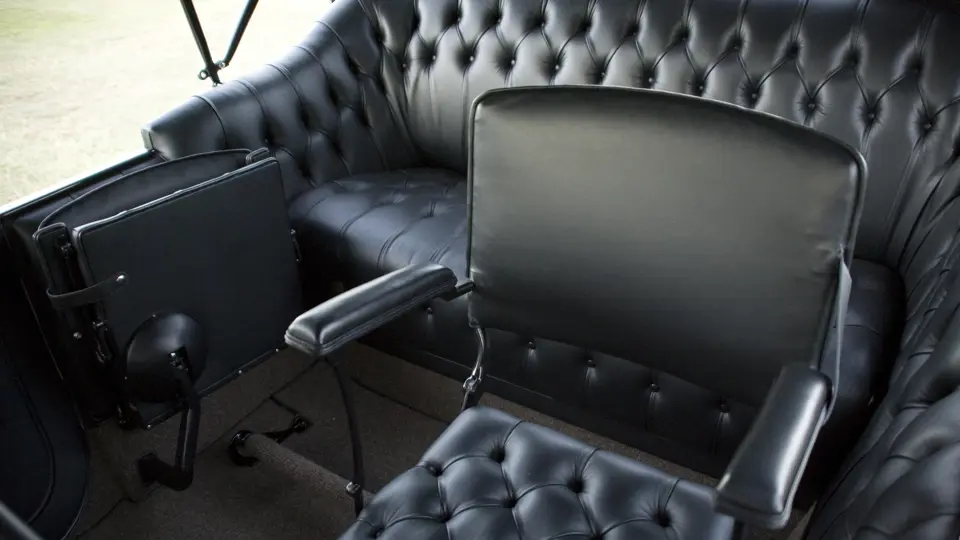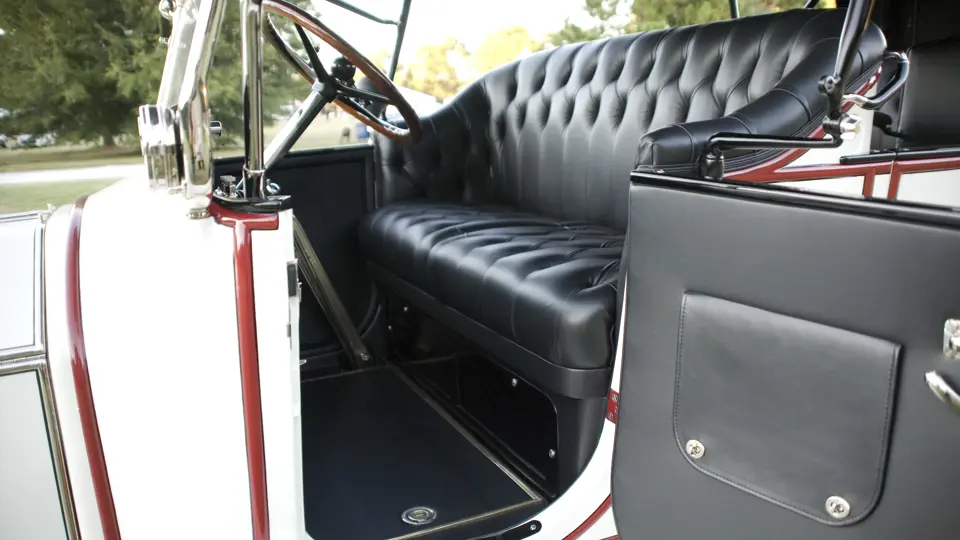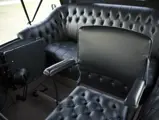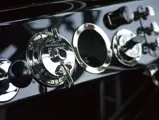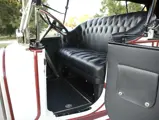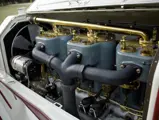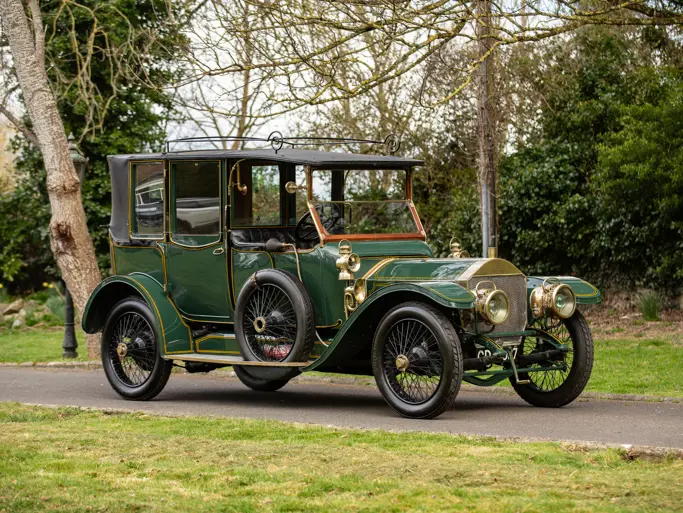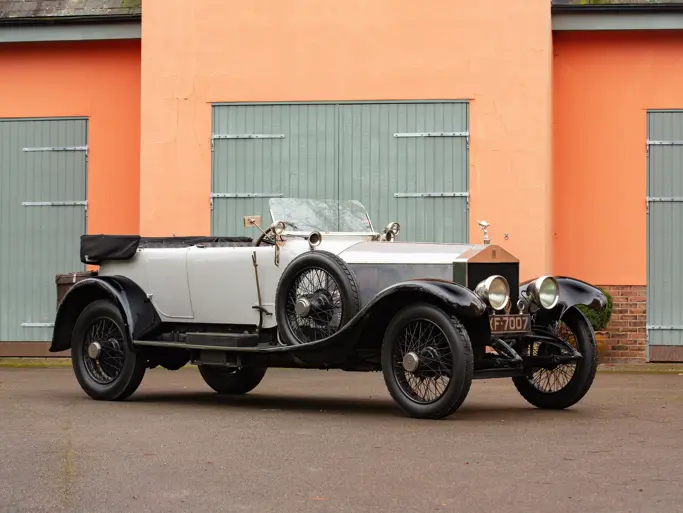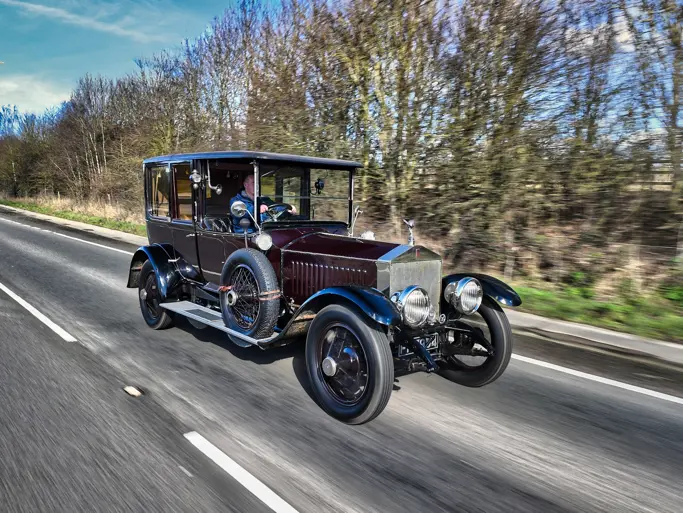48 hp, 577.5 cu. in. T-head six-cylinder engine, four-speed manual transmission, solid front axle with semi-elliptic leaf springs, platform rear suspension with semi-elliptic leaf springs, and two-wheel mechanical drum brakes. Wheelbase: 137 in.
• Single family ownership from new
• The only 1915 Peerless 48 HP Seven Passenger Touring known to exist
• A multiple Best in Class winner since the complete restoration
The Peerless Manufacturing Company began making household items like clothes wringers but moved on to bicycles with the cycling craze of the 1890s. Like its cycle industry competitor Pierce, Peerless soon aspired to build automobiles, taking a license from DeDion in France for a small tricycle to be called the “Motorette.” Three sizes of Motorettes were offered in 1901, for one, two, or four passengers, all powered by single-cylinder engines. That year, Chief Engineer Louis P. Mooers had begun work on a car of his own design. His first was an 8-horsepower single, followed by two vertical twins. All three adopted “Systeme Panhard,” with front engine, shaft drive, and a full-floating rear axle. For 1904, there was a four-cylinder model with a pressed-steel chassis.
Mooers believed in testing on the race track. His twin-cylinder cars competed at Rhode Island’s Narragansett Park, with some success. Mooers himself then drove a four-cylinder 24-horsepower car at the Glenville track in Cleveland, finishing third behind Gordon Harkness, in a 60-horsepower Mercedes, and Alexander Winton in the Bullet I, which was rated at 40 horsepower. Heady with success, Mooers then built a car to contest the Gordon Bennett race in Ireland. Its stateside shakedowns were somewhat inconclusive—it made a good showing at trials on Long Island, but it did not handle as well as Mercedes. The experience in Ireland was dismal, with Mooers crashing on the first lap.
Thereafter, Mooers gave up driving, but he rebuilt the car for Ormond Beach, where Joe Tracy made the fastest time of the day and placed well in several races in January 1904. Peerless’ great fame in racing, however, came after Barney Oldfield was hired in mid-1904. The barn-storming Barney, in the flame-belching car dubbed the “Green Dragon,” won 16 races in as many starts, albeit with some crashes that required building new Dragons. By the end of 1904, Oldfield had rolled up the American championship by defeating Earl Kiser at Cleveland, then the world championship two weeks later.
Peerless production ran at 250–300 cars per year in 1905, necessitating plant expansions. Advertising began appealing toward the wealthy, emphasizing what one should expect in a luxury car: silence and comfort, while making no mention of economy. Taking the company name literally, the tag line became “all that the name implies.”
Mooers left in 1905, joining the Moon Motor Car Company in St. Louis. Peerless President L.H. Kittredge hired Charles Schmidt in his place, luring him away from Packard. Schmidt proceeded to evolve Mooers’ T-head four into a six, ready for the 1908 season. Advertised as a 50-horsepower car, it was, by the ALAM rating, a 57-horsepower engine and drove through a four-speed transmission of the type first used on the Green Dragon. Other features were a flyball governor and cross-flow radiator. Soon there were competitors not only from rival Pierce but also Stevens-Duryea, Thomas, and Winton. Packard, the third member of the luxury “Three Ps,” did not field a six until 1912.
By 1913, Peerless had fully grown into its slogan “all that the name implies.” Three models of sixes and two fours carried over from 1912, but the more-or-less sequential model nomenclature had caught up with the cars’ horsepower ratings. This caused some confusion, so the sixes were now designated 38-Six, 48-Six, and 60-Six, according to their taxable horsepower ratings. The fours were called 24-Four and 40-Four, in like manner. There were few mechanical changes, save for a shift from dual to single ignition, which eliminated one set of spark plugs. The makers explained that since most driving was done on magneto, the plugs for the battery ignition system were rarely fired, resulting in carbon buildup that rendered them unusable when called upon. The gear-driven cooling fan was replaced by a belt-driven type, and the Truffault-Hartford shock absorbers were made standard equipment on the front axles.
Peerless had been a pioneer in automobile electric systems. Gray & Davis generator-charged lighting had been adopted for all models in 1912. For 1913, electric starters, six-volt Gray & Davis units, became standard on all six-cylinder cars. The two-unit system contrasted with Cadillac’s Delco equipment, which combined the starter and generator into a single compound-voltage unit. The two-unit system eventually won out in the marketplace and even Cadillac adopted it after 1925.
It was just another feature of the luxury manufacturer and such amenities would be expected on a car of such quality and expense. It is no wonder that a gentleman such as H.D. Hackman would select this very seven-passenger touring car to be the family automobile in 1915.
H.D. Hackman was a prominent cigar manufacturer in Womelsdorf, Pennsylvania, from 1890 to 1910, with his company responsible for many different brands, including “Old Masters,” which would later become the very successful and commercial brand “Dutch Masters.” Notably, records indicate that Mr. Hackman traded a Pullman in as part of his purchase of the 1915 Peerless from the Philadelphia based Girard Automobile Company in June of that year.
The Peerless was the perfect car for the married father of five. Following Mr. Hackman’s passing in 1933, the Peerless was placed in storage, where it is reported to have remained until 1963. At that point, the car passed into the ownership of young James Hackman, who most impressively, at the age of 13, already owned a 1929 REO Flying Cloud Convertible. With the help of his father William, some work was executed on the Peerless, however, it would largely remain in storage for the majority of the time, until around 2003, when it was decided that a full restoration would be undertaken.
The Motorcar Company, of Stauton, Virginia, was selected to restore the Peerless to its original majestic glory. According to restorer Mr. Al Markunas, the Peerless remained in well-preserved original condition and, as such, required only minor panel work. It is evident in the overall quality of the restoration that absolutely no expense was spared throughout the entire process; the results are simply stunning even today.
It was initially debuted at the 2010 Hilton Head Concours d’Elegance, where it received a Best in Class award and was proudly displayed by Mr. Hackman for the first time in over 70 years. As a further testament to the quality of the overall restoration, the Peerless was bestowed with a Best in Class award at the 2011 Boca Raton Concours d’Elegance, and then, just one month later, it received similar accolades at the prestigious 2011 Amelia Island Concours d’Elegance. Several months later, it was invited to the inaugural “Elegance at Hershey” event and was displayed there in June of that year, notably only a short 20 mile journey from where it had resided and been garaged for so many years.
Amazingly, the Peerless still retains the original odometer, which reads approximately 24,500 miles and is believed to be, though unverifiable by conventional means, the honest mileage from new. Since the completion of the restoration, the Peerless has travelled only a limited distance, all of it either test mileage or incurred while traveling to the winner’s circle to collect its awards.
This 1915 Peerless is truly an exceptional example, given its outstanding single family ownership provenance, its recent full restoration of an impressively original car, and its overall rarity as the singular example of that particular model. It is worthy of close inspection on all fronts and remains ready for its next long-term owner, whether their desire be long distance touring or continued show competition.
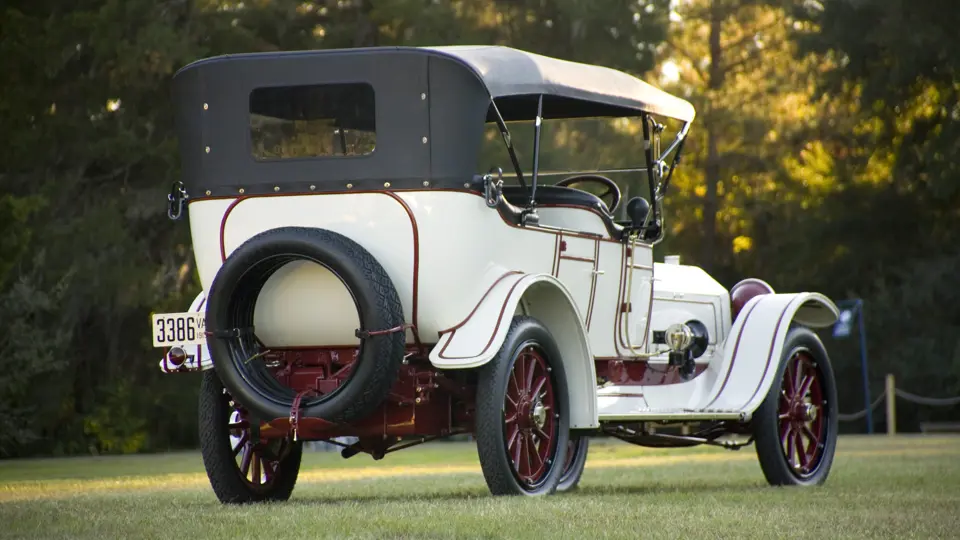
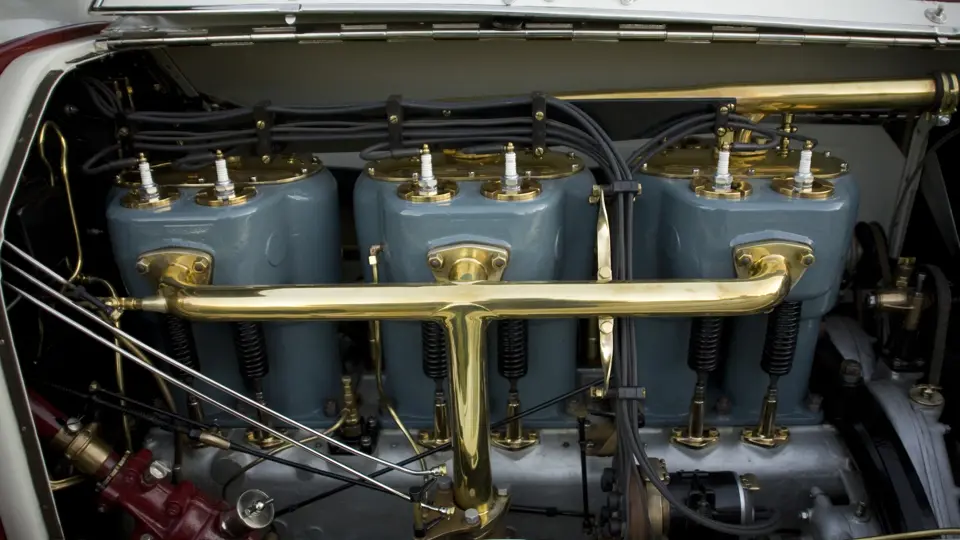


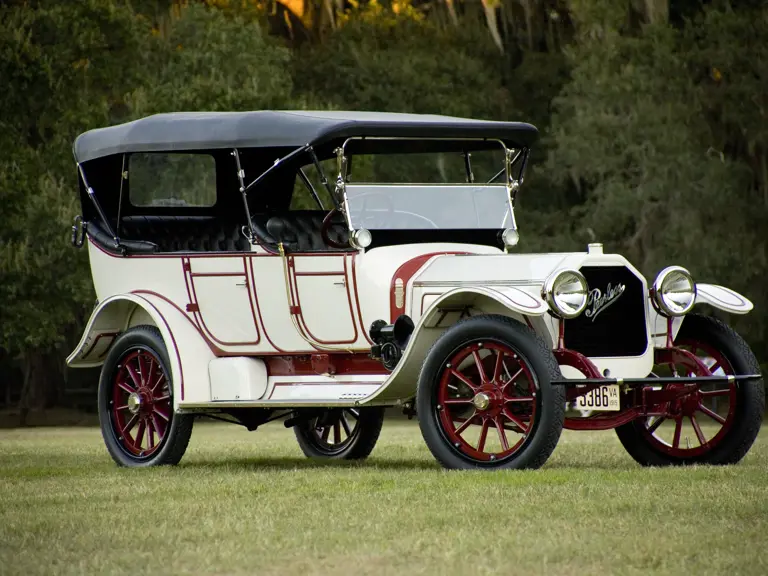
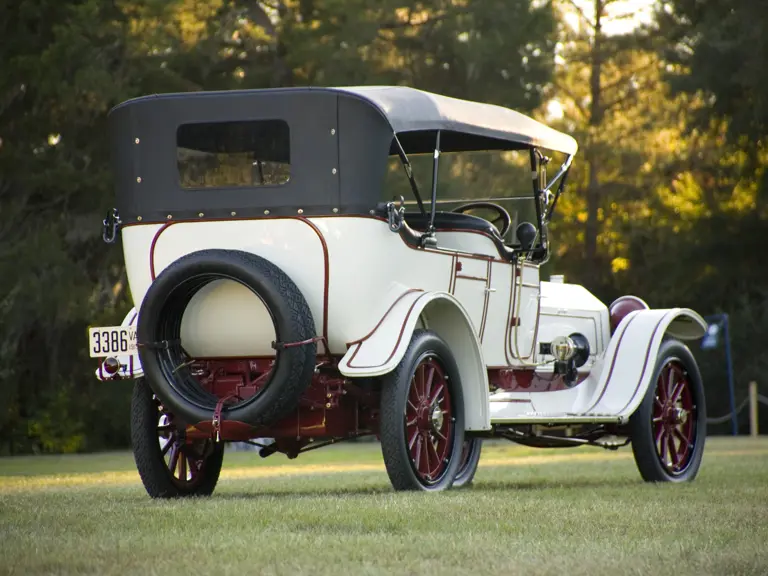
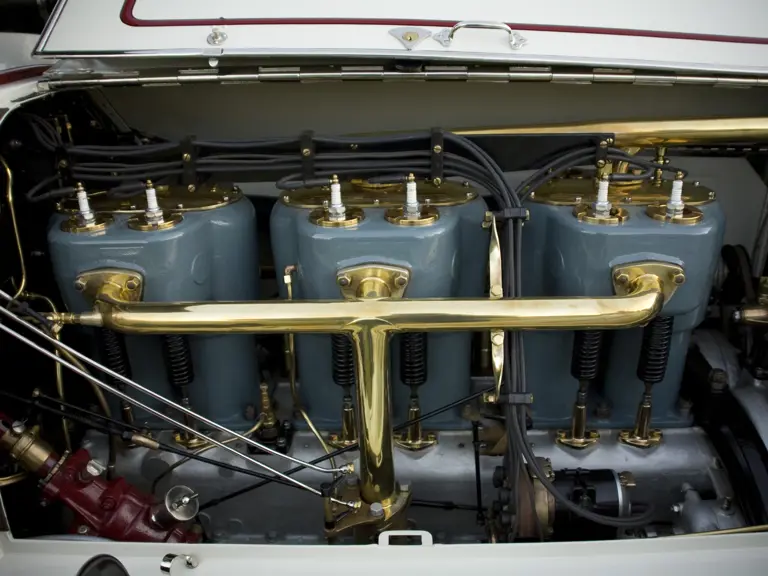
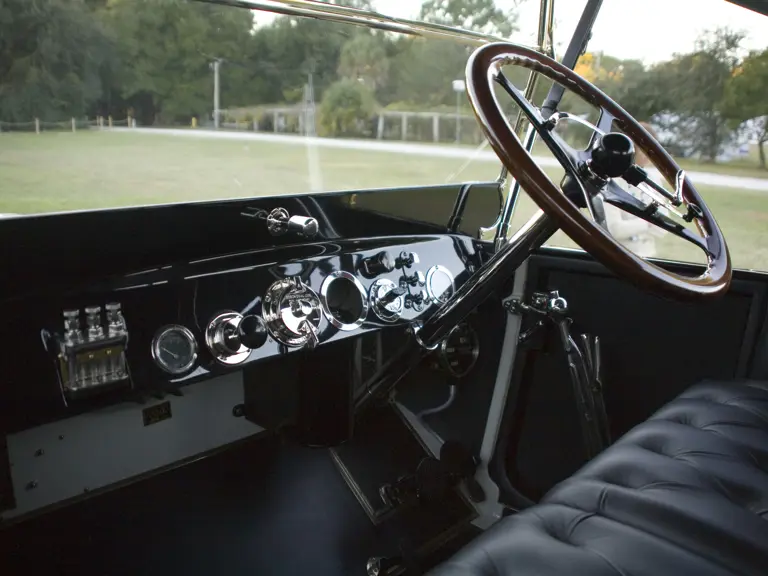
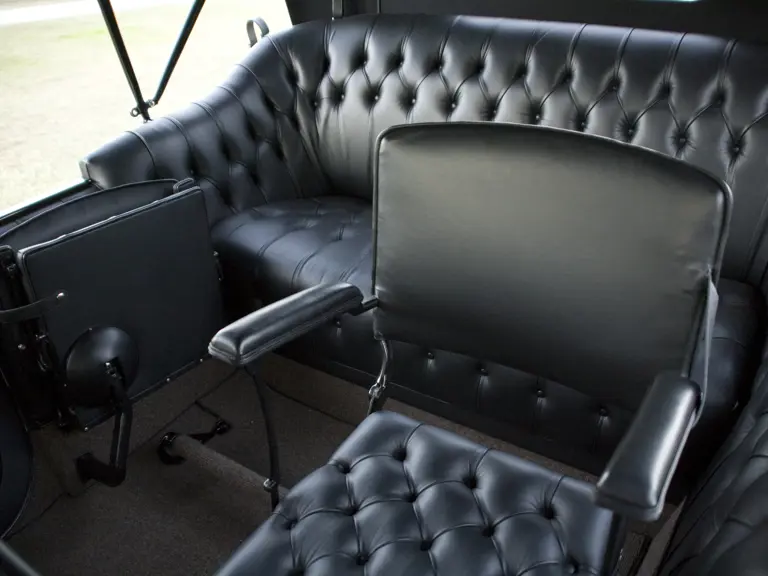
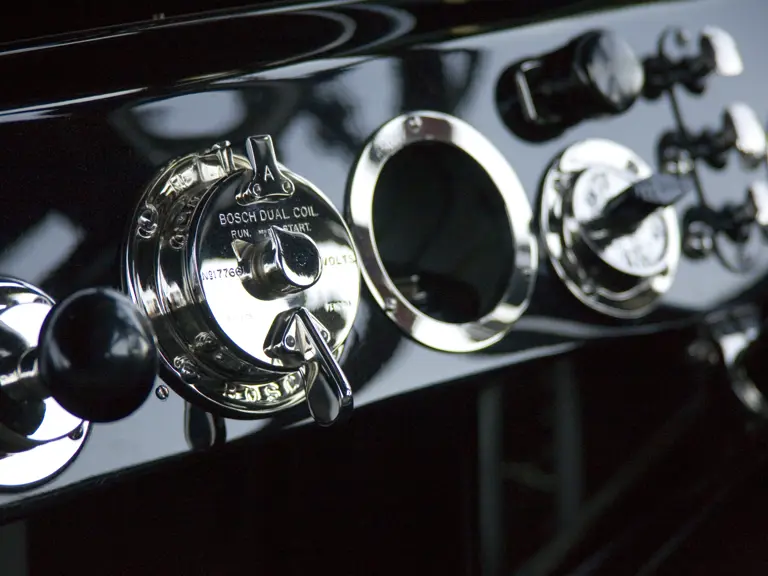

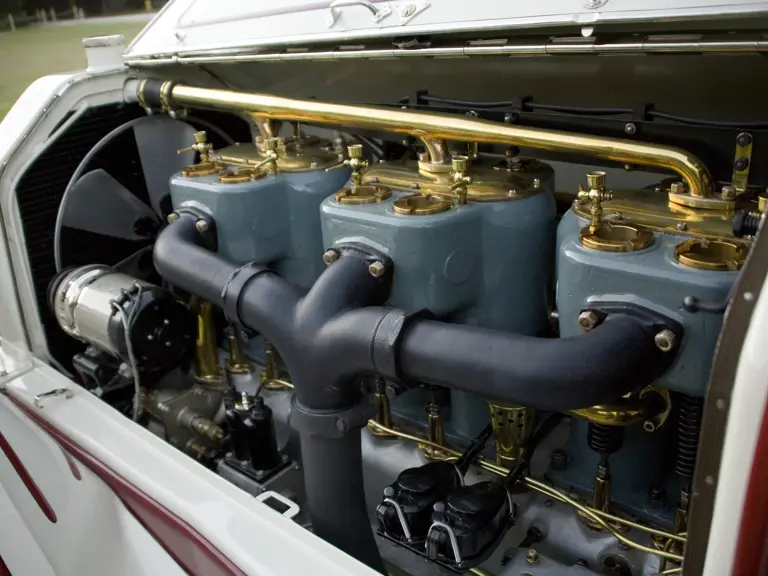
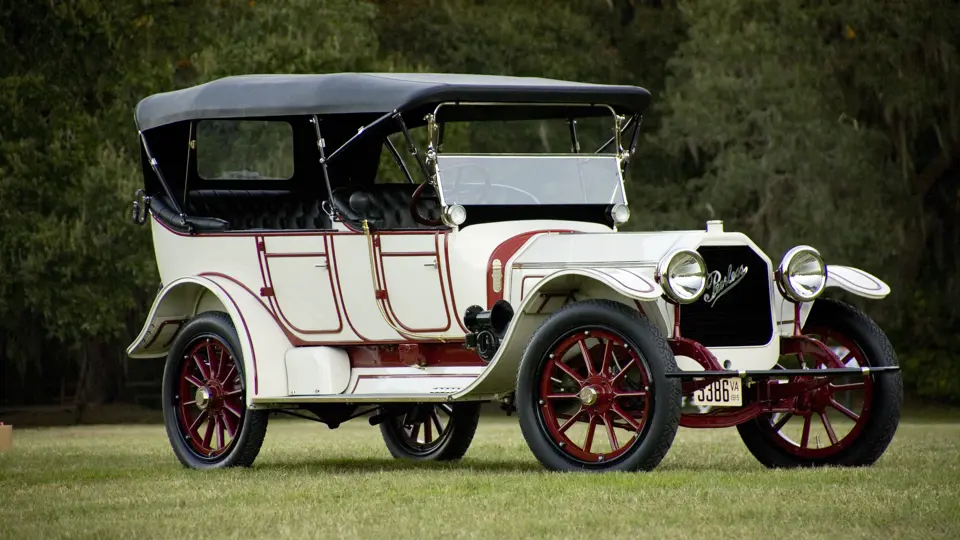
 | Hershey, Pennsylvania
| Hershey, Pennsylvania
